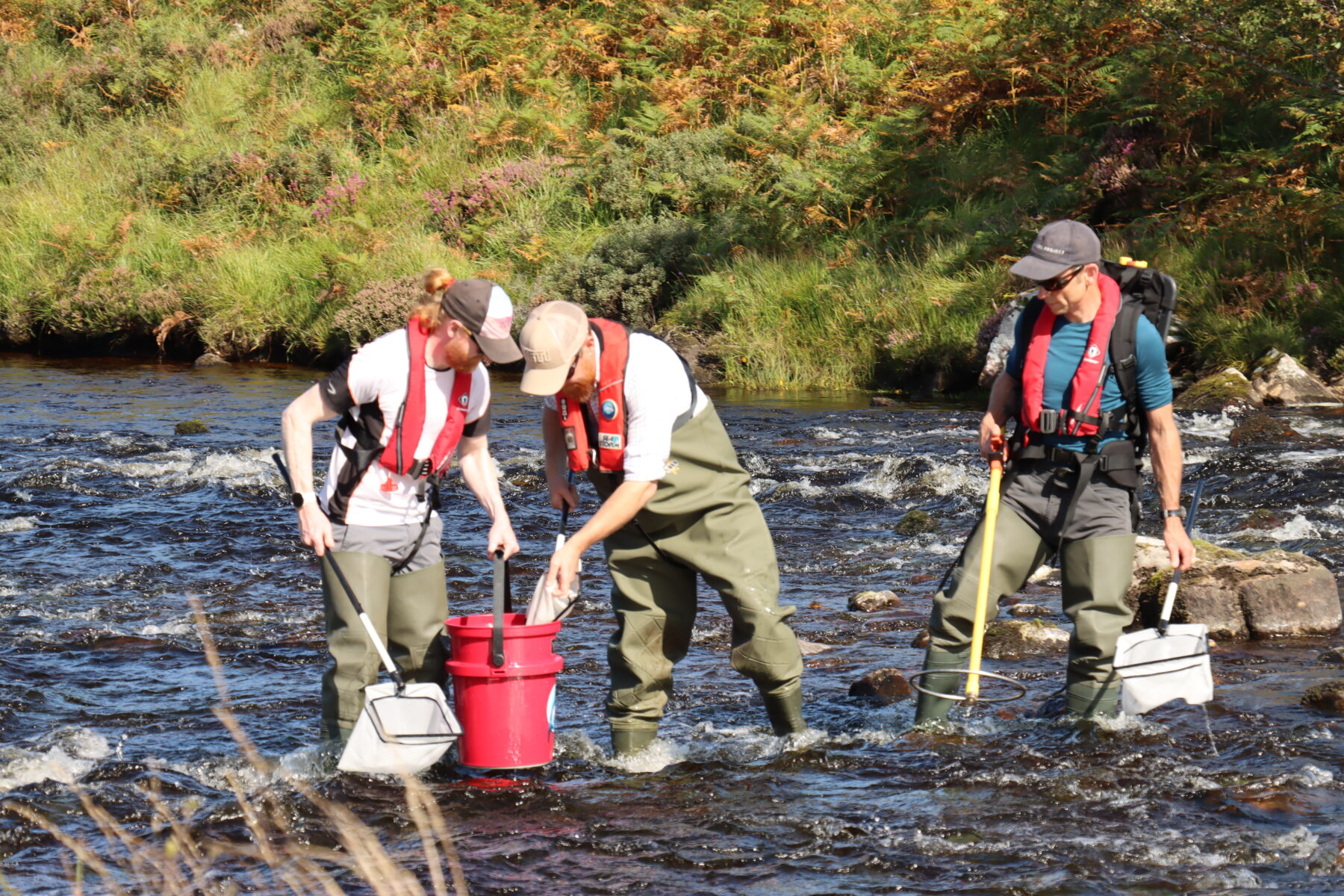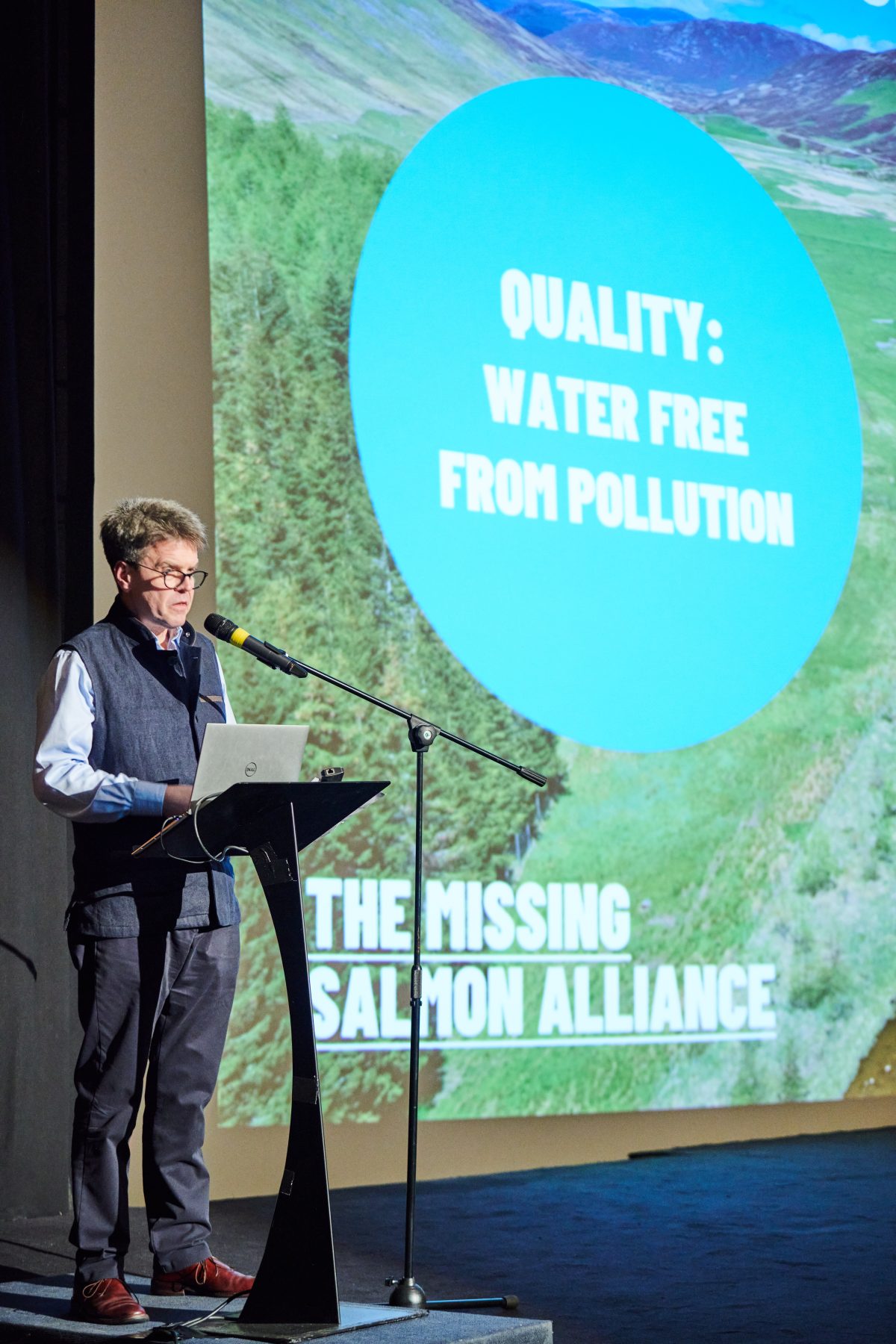EVIDENCE. SOLUTIONS. PARTNERSHIP.
How we work to restore wild Atlantic salmon and their environment.
Pillar 1 – EVIDENCE



Evidence at the heart of what we do
An evidence-led approach has always been our first pillar. A solid foundation, and reputation of fifty years of evidence gathering and understanding, enables us to not only mobilise our existing evidence base into workable restoration solutions right away, but also to prioritise the next research projects.
Future projects will aim to fill knowledge gaps relating to the pressures currently thought to be causing salmon decline. Continuing to refine and build on this foundation is essential, particularly in a fast-changing world where salmon and their cousins, sea trout, need to adapt quickly to emerging threats too.
We’re a founding member of the Missing Salmon Alliance, whose project, The Likely Suspects Framework, brings together evidence from international research partners across the salmon’s North Atlantic range to inform the actions which should be taken on the ground in river catchments. Our recent acoustic tracking projects, the Moray Firth Tracking Project and West Coast Tracking Project, are also adding to our understanding of what is happening to young salmon ‘smolts’ during their downstream freshwater and early marine migration phases. Some key knowledge gaps remain, particularly around what is happening to salmon at sea. We will be looking to fill those gaps.
Pillar 2 – SOLUTIONS


Demonstrating wild salmon restoration on two Core Rivers
The Core Rivers are catchment-scale restoration partnership projects which use salmon as the focus area for achieving wider environmental improvements, driven by achieving cold, clean water. These river systems will put restoration solutions to the test, measuring their success over time by accurately monitoring salmon populations and other environmental indicators. Currently the Core Rivers are Project Laxford and Project Deveron, with that network set to expand further.
Both Core Rivers are using PIT (Passive Integrated Transponder) tags – tiny microchip tags implanted into fish (about the size of a grain of rice) which don’t rely on battery power to work. This means we can track fish over several years at each part of their lifecycle from parr to returning adult whenever they swim over a PIT detection array in the river, giving us a vital picture of marine survival rates the fish population response to restoration actions.
Core Rivers are about putting evidence-based solutions into practice on a river catchment scale, then accurately measuring the impact of those actions on the salmon population.
Pillar 3 – PARTNERSHIP


Inspiring and assisting restoration at scale
The Partnership pillar of our strategy means taking the successful solutions from the Core Rivers, and seeing them rolled out across the salmon’s range so their benefits can be felt far and wide, delivering a package of solutions to those who wish to restore salmon on a catchment-wide scale and providing support for their implementation.
This means working internationally with governments, our partners in the Missing Salmon Alliance, and our counterparts across the North Atlantic to achieve meaningful restoration. It means working to restore specific natural processes which existed in the past to enable salmon to overcome the challenges of the present and future. This is the driving philosophy at the heart of our Partnership pillar.
Working in partnership to give salmon what they need to thrive means…
- Cold, clean water free from point source and diffuse pollution, with sufficient food availability for juvenile salmon.
- Free access to spawning areas (both upstream and downstream movement of fish).
- A free-flowing river where water can move freely both downstream, and across natural flood plains and riparian zones.
- Structural instream habitat and dappled shade above complex and wide riparian zones for thermal refuge and protection from predators.
- Pushing for robust regulation of activities such as aquaculture and marine developments in the near coastal environment, to protect juvenile salmon during the early phase of their marine migration.
Only by delivering these solutions through partnerships will we see the scale and pace of action our wild salmon need.
Our vision? By 2050 the decline in wild Atlantic salmon has been halted across its range and numbers are increasing in over 50% of the catchments it calls home.
